A look at endgame strategy in Roll. In this guide we look at some good strategies and explain the concepts that make them score better than others.
Hello
In this guide I try to explain what you should aim for. I won’t explain exactly how to get there. But I will explain what you need to accomplish if you want to get on that leaderboard.
I’ll start with strategies that are easy to put together. Then I build from there, introducing more concepts that will help you score higher. I roughly follow my own progression of strategy development. That means that the later strategies can be difficult to set up. Only with a good grasp on what is important and what to focus on at any given time can you have success.
Try building some of the easier boards instead of jumping straight into 16 dice lotto 😉
By slowly going through the strategies I hope to explain the high scoring concepts well enough that you can figure out your own strategies using your favorite dice. And should updates to the game render the strategies here obsolete, that should still be a solid starting point for developing the new top strategies.
For reference, I’m writing this on November 9 2021. In the latest update All-In and Passive Hunter were introduced, among other things.
5 Dice Yahtzee
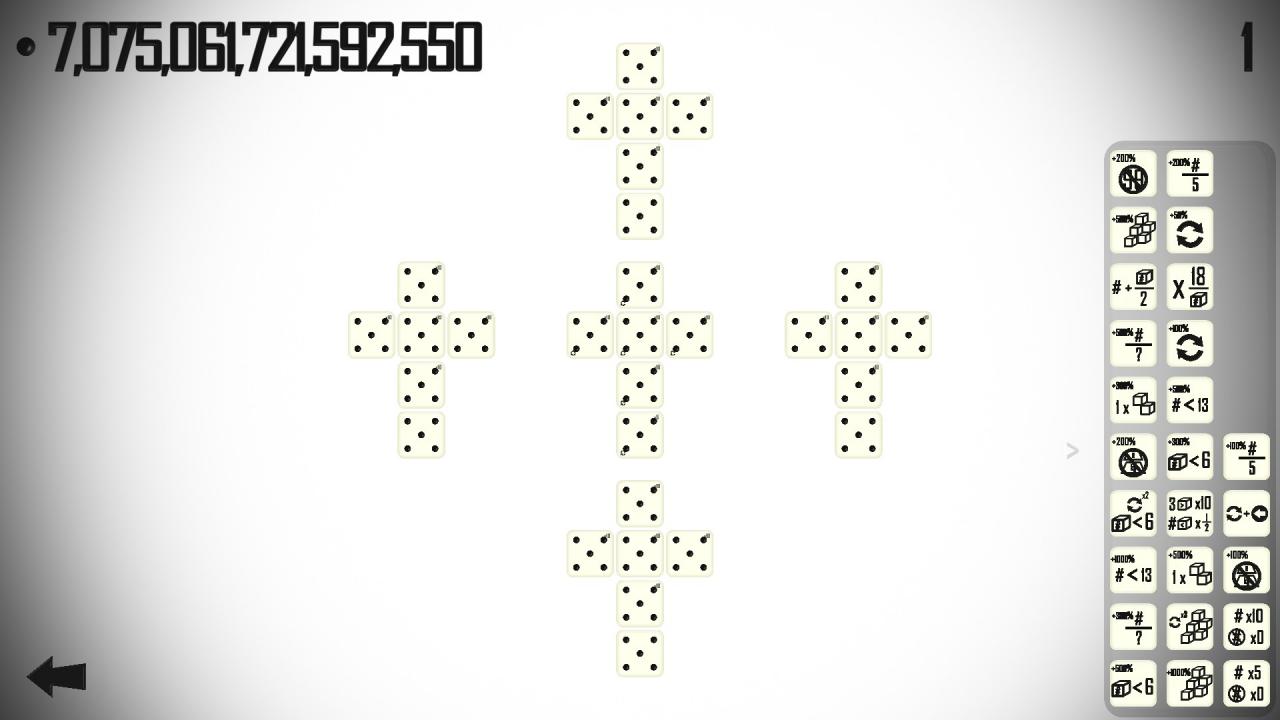
The list of helpful passives is long: <13 bonuses, divisible by 5 bonuses, yahtzee bonuses, no 99s bonuses, no weights bonuses, prime bonuses, single set bonuses, <6 dice bonuses, …
Some passives are deliberately built around: We are using only 5 dice specifically to activate the <6 dice bonuses. We are using 5 pips on every face because it takes advantage of the <13 bonuses, the divisible by 5 bonuses and the prime bonuses. That makes 5 the best numeric face for the yahtzee strategy.
Getting as many passives as possible working together is the key concept that should be taken from this strategy. Additionally this strategy is extremely consistent. Every single roll will be the same and score us the maximum amount of points our passives allow.
Void Faces
We can pick up the combine face multiplier passive to stack the attached multipliers on that face up to 99. We can also put void faces on all other faces of the die. Those stack, so now when the face comes up it scores 2^5 = 32 times more.
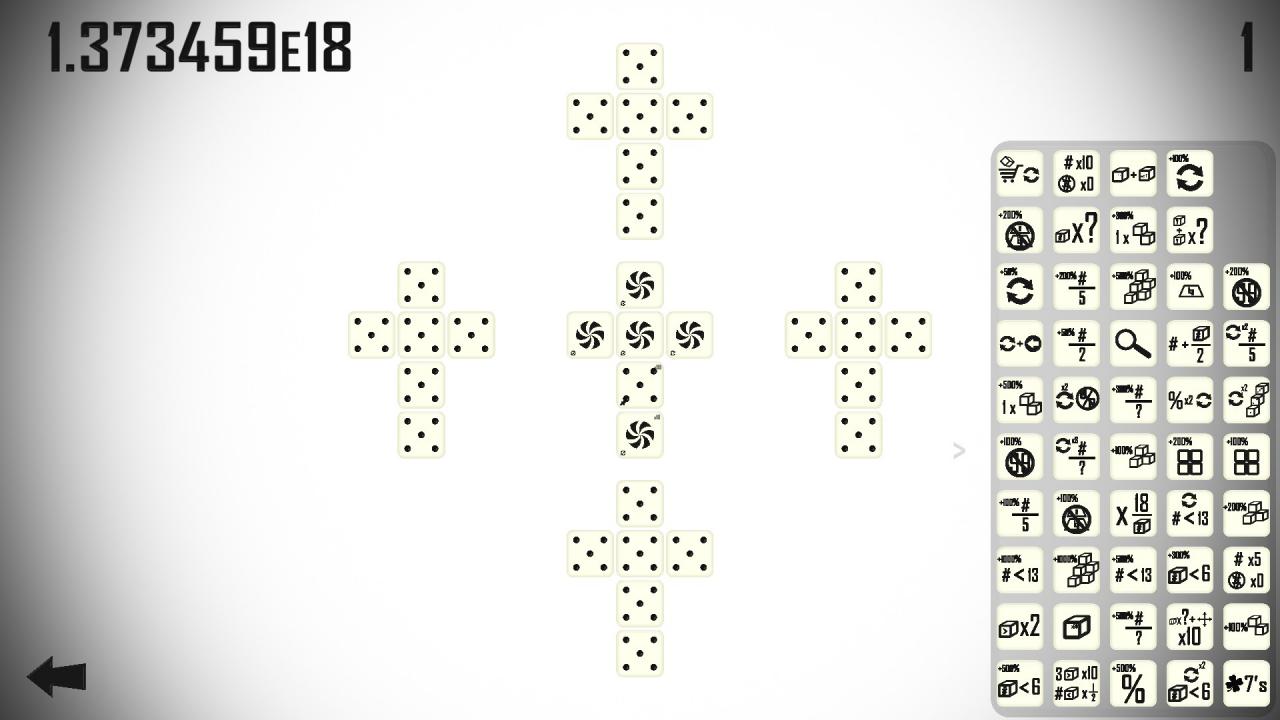
Even when we take into account that now only 1 in 6 rolls will hit the scoring face, we still come out ahead. By sacrificing some consistency we have gained a higher expected value. (And we can get slightly better odds by using glue.)
Note that now most of our points come from just the void die, with the other 4 dice contributing nothing significant to the final score. So it might be tempting to convert a second die into a scoring die. But that would be a mistake. Yes, if both scoring die hit we will earn twice as much. But that only has a 1 in 36 change of happening. 6 times worse than the chances were with only one scoring die. And if we hit only one of the scoring dice the other will show a void face. So the scoring die wouldn’t get the yahtzee bonuses. Such a partial hit would not be significant for the final score. Overall we lose expected value by putting in extra work to build a second scoring die.
Numeric Run
We need two dice to create a run for the scoring die. The remaining two dice can still give it the triple bonus. So instead of taking a x16 from a yahtzee we take x4 from triples and x7 from run multiplier. Except that now a higher base numeric value means we can get a higher multiplier from the run. This leads to 97, the highest possible prime, outperforming 5 despite the latter getting two additional bonuses.

Note that when you roll (96,97,97,97,98) only one of the 97s will get the run multiplier. Use analysis mode to make sure that it is the one with the void faces. As far as I can tell the multiplier will go to the 97 in the oldest die position, so I tend to place my scoring die in the center. But you should verify that it works correctly for your runs.
Previous Roll Multiplier
But multiplier faces exist. And there is one that is powerful enough to more than make up for the loss of numeric bonuses: the previous roll multiplier. Just put one of those on our scoring die instead of a void face and we are good to go.
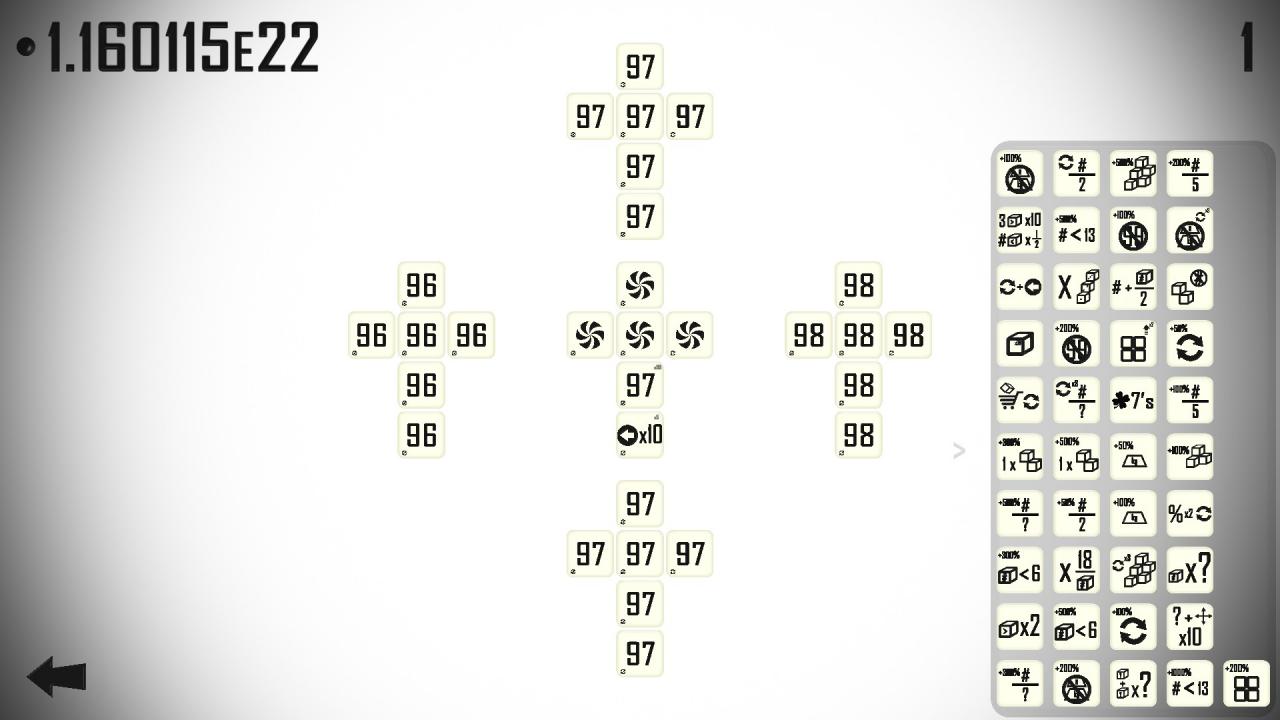
The reason this works is that the previous roll multiplier doesn’t just multiply the score that we previously got by its own value. It also allows global passive bonuses to apply again! So for example the no 99s bonus applies once to the 97 and a second time to the previous roll multiplier.
Of course we now rely on a combination of rolls to score our points. We need to hit the 97 followed by the previous roll multiplier, reducing our winning chances from 1 in 6 to 1 in 36. But thanks to all the global passives the multiplier more than makes up for that.
Note that we don’t want glue anymore, because repeating one face doesn’t help us much. We only get the big points when we switch between the 97 and the previous roll multiplier.
Non Standard Multiples
To make double bonus work with the previous roll multiplier we need the non-standard multiples passive.
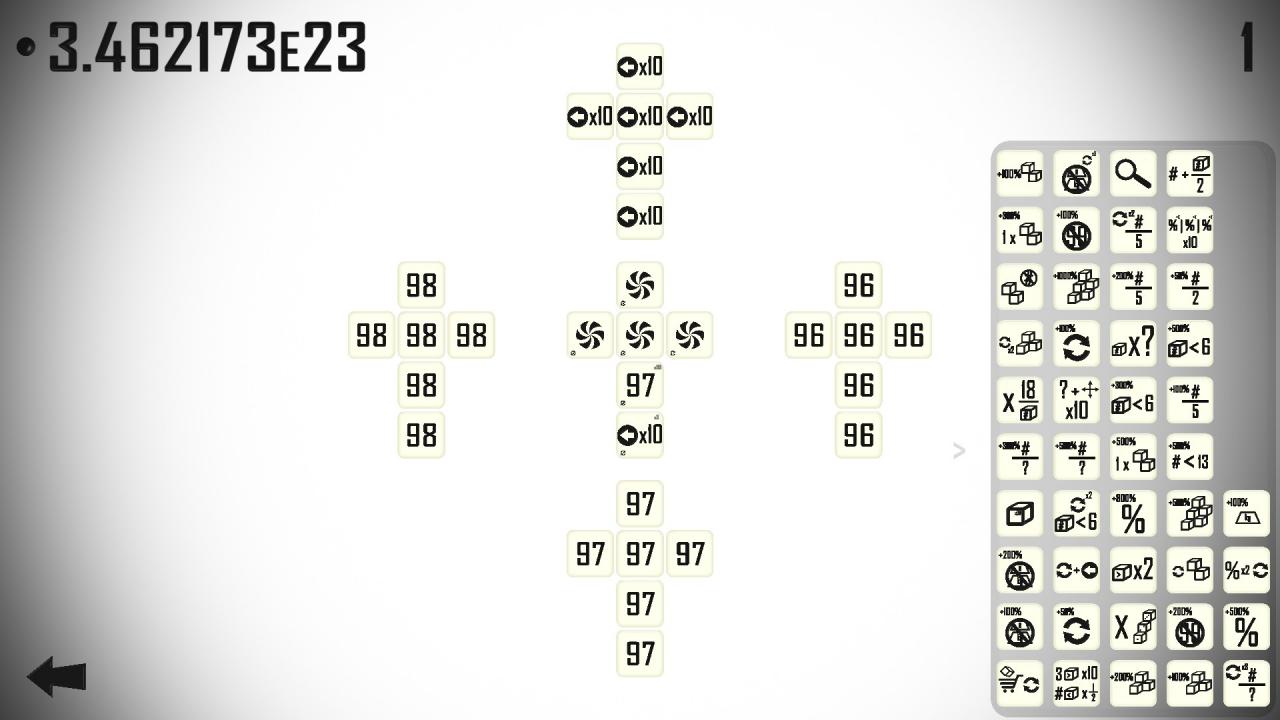
Note that the die with six previous roll multipliers will never score a single point by itself. But just by being there it will always give the double bonus to the scoring die. And doing that consistently is the important part.
Another thing to note is that when the scoring die rolls a 97 we have exactly one double. When the scoring die rolls the previous roll multiplier we also have exactly one double. That means we get the single set bonuses both times.
5 Dice Lotto
Due to lottery failures the chances of scoring high are reduced again. But the high base of 77777 and strong lottery bonus passives make up for that.
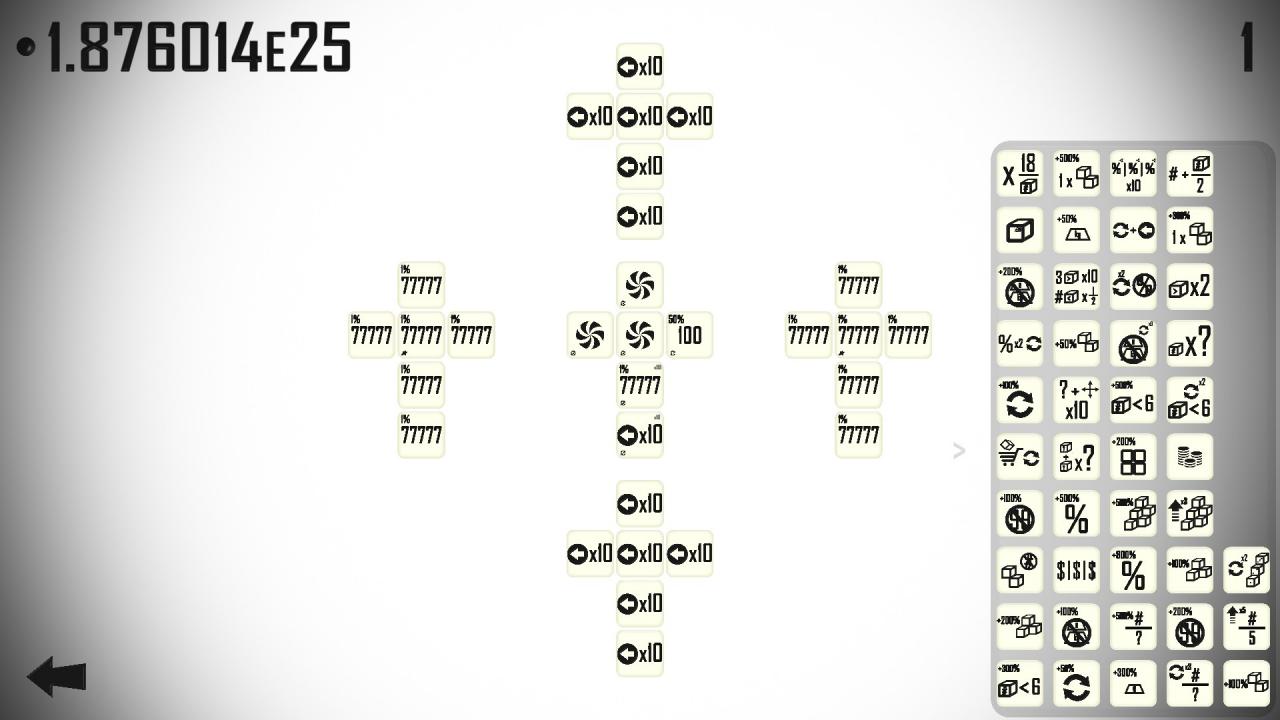
We need the slot machine passive to allow the attached multipliers to work on lottery faces. The positioning requirements of that passive also mean we have to score with the center die, bracketed by 77777 dice on the left and right.
We have enough dice to go for triples on both 77777 and the previous roll multiplier. If one of those faces comes up on the scoring die it will complete the only triple on the board and also get the single set bonus.
Lottery Multiplier
To fit it into our five dice build we need to give up triples.

Note that we have to give up the triples on both the previous roll multiplier as well as the 77777. Otherwise the dice for the incomplete triple form a double, in addition to the double that includes the scoring die. That die would then not receive the single set bonus anymore.
So we have a free die and the best we can do with it is put wild faces on there, so when we win the lottery multiplier it gets copied. Honestly that is not worth going for unless we encounter really good opportunities to pick up wild faces.
The major problem with including the lottery multiplier is that it reduces the chances of our highest scoring roll even further. We now need to hit an additional face and we need to win the lottery on that face. The chances are getting so low, that we need hundreds of rolls to see a single huge payoff. Still they are exactly in that range where we can reasonably expect to get that one win in. And the multiplier is big enough that this increases our final score.
16 Dice Lotto
As it turns out going up to 16 dice lets us do all those things, plus it activates the square bonus passives. Losing the <6 dice bonus and the factor 18 quantity passives hurts, but all the extra bonuses we can access with 16 dice come out ahead in the end.

We even have enough room to increase our winning odds a bit with the lucky 7s passive. Though that is only for the base scoring die. The spaces above and below the lottery multiplier die are more usefully taken up by wilds for the adjacency bonus.
Note that wilds, lottery multipliers and global multipliers don’t benefit from doubles and other set bonuses, so getting more of those won’t help. In addition the global multiplier faces don’t pick up points from lottery multipliers and vice versa, so including those in the build wouldn’t extend the multiplier chain. In the end the lottery multiplier with all the bonuses is clearly better.
